Pagurus kennerlyi (Stimpson, 1864)Common name(s): Bluespine hermit |
|
| Synonyms: Eupagurus kennerlyi | 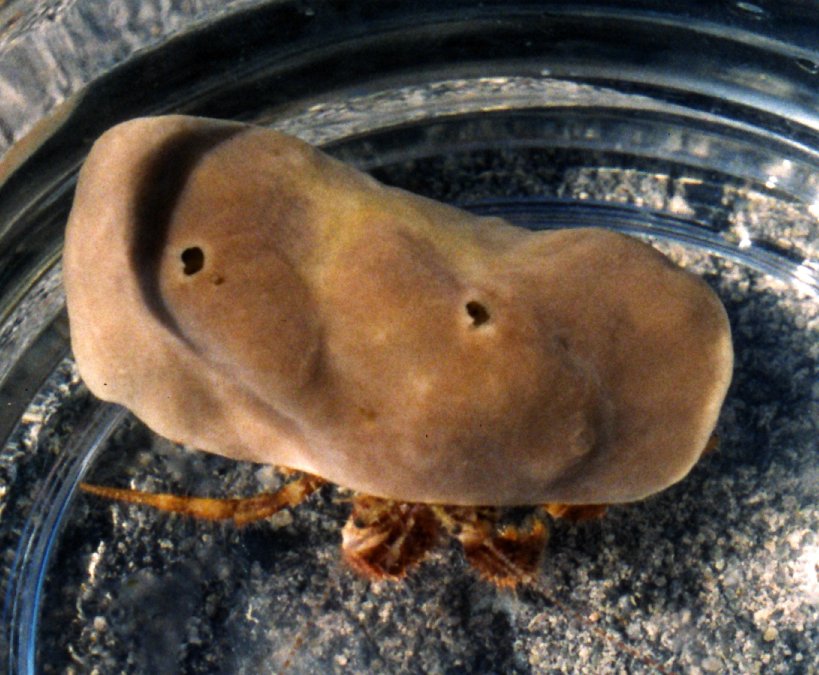 |
| Phylum Arthropoda
Subphylum Crustacea Class Malacostraca Subclass Eumalacostraca Superorder Eucarida Order Decapoda Suborder Pleocyemata Infraorder Anomura Superfamily Paguroidea Family Paguridae |
|
| Pagurus kennerlyi from 100 m depth, San Juan Channel. Animal is encased in a sponge (Suberites sp?). | |
| (Photo by: Dave Cowles, July 2000) | |
How to Distinguish from Similar Species: Other similar species have no white band on the merus of the chelipeds.
Geographical Range: Aleutian Islands, Alaska to Puget Sound
Depth Range: Low intertidal to 274 m
Habitat: Many habitat types, from rocky to muddy
Biology/Natural History: In the San Juan Islands this species is common subtidally on silty sand bottoms near large rocks. Sometimes uses the hermit sponge Suberites.
| Return to: | |||
| Main Page | Alphabetic Index | Systematic Index | Glossary |
References:
Dichotomous Keys:Coffin, 1952
Hart, 1982
Kozloff 1987, 1996
General References:
Jensen,
1995
Scientific Articles:
General Notes and Observations: Locations, abundances, unusual behaviors:
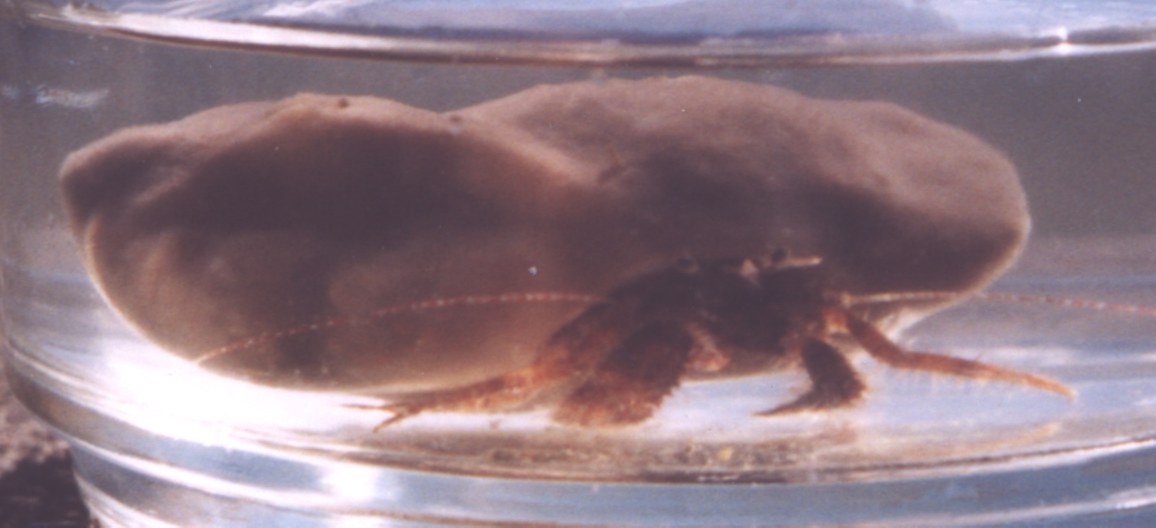
Front view of Pagurus kennerlyi in
sponge. Photo by Dave
Cowles, 2000
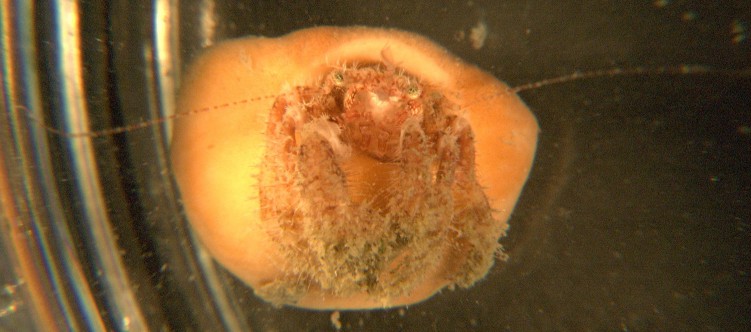
Here is another individual peering from its sponge shelter.
The
sponge is 2 cm wide. Photo by Dave Cowles July 2008

This is the same individual as was shown peering out of the sponge
above. Photo by Dave Cowles July 2008

Pagurus kennerlyi captured at 100 m depth in a San
Juan Channel
trawl. The limpet Acmaea
mitra is perched on its shell.
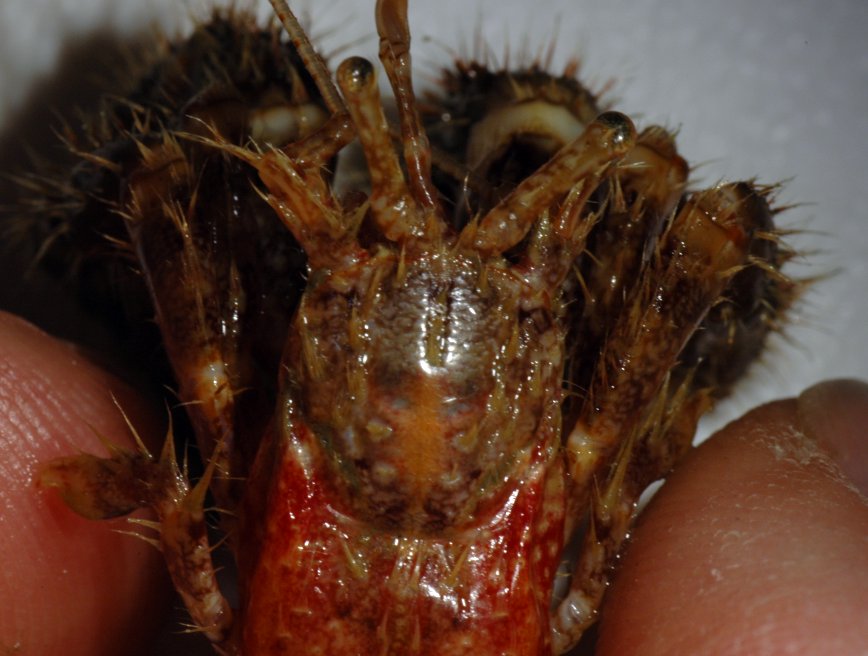
Only the carapace shield is calcified, and it is about as wide as
long.
The eyescales end in a single spine. Patches of setae
occur in many parts of the body.
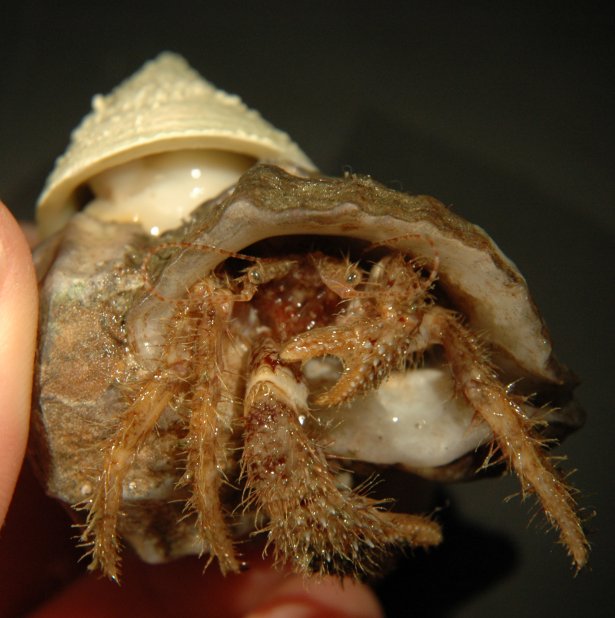
In this view one can see that the carpus
of the right cheliped
is about twice as long as wide, and also can see the white band around
the distal end of the merus
of the cheliped.

The dactyls
of legs 2 and 3 are not twisted.

The chelae
are covered with setae
and blue or white tubercles,
but there is no prominent ridge on the dorsal
surface of the left chela.
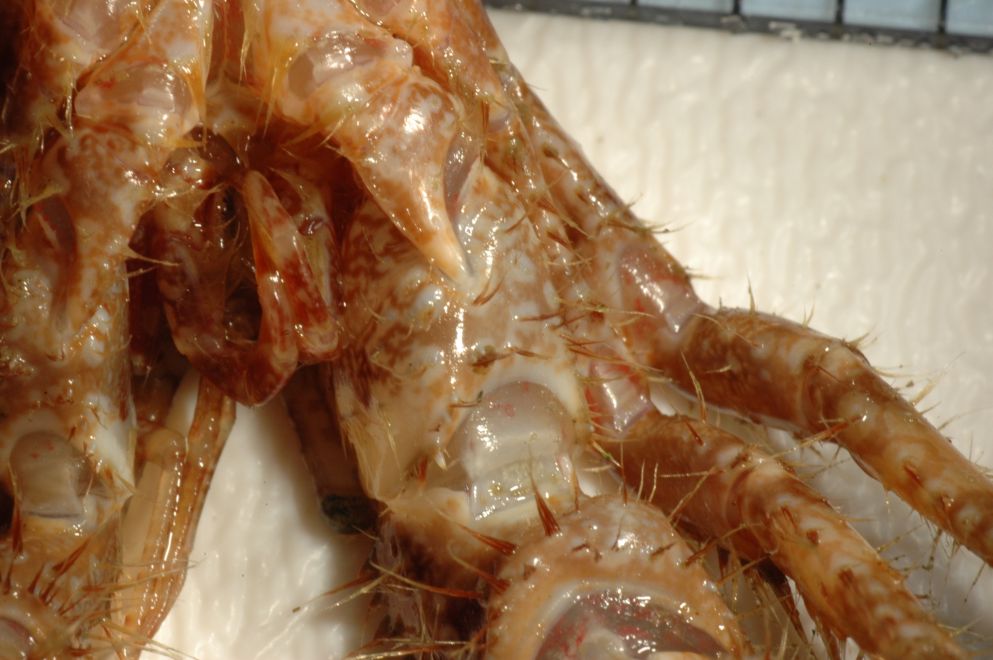
The merus of the right cheliped
has no prominent tubercles
on the ventral
side.

Here is a ventral view of another individual, also showing the lack
of prominent tubercles
on the ventralmerus
of the right cheliped.
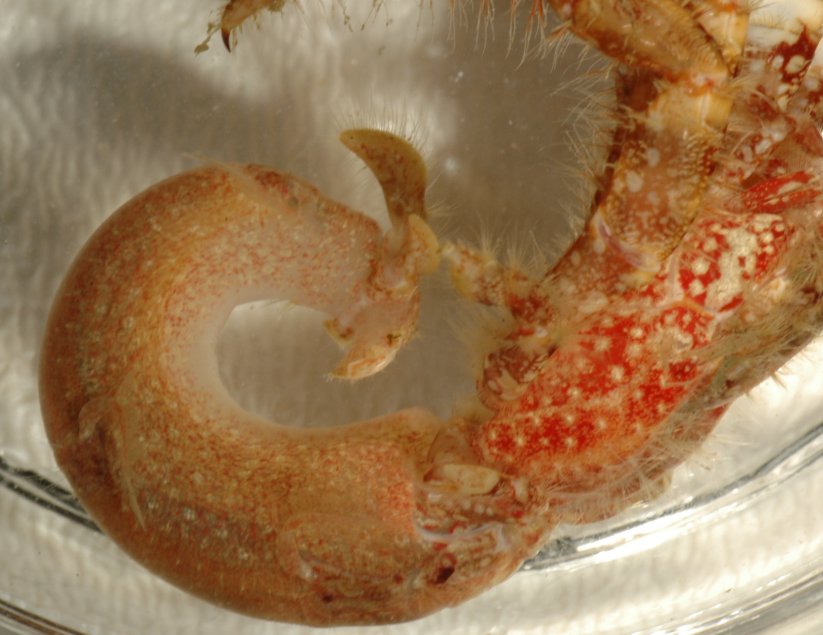
As with most hermit crabs, the abdomen is soft and curved.
The
male has uropods
on the end of the abdomen.

Leg (pereopod)
4 is much smaller than the other legs, and subchelate.

Sometimes this species lives in a sponge, probably Suberites
suberea. I cut this sponge open (the
hermit crab is still
alive but anesthetized).
Before I cut it open, the sponge was alive and actively pumping water
out of the osculum
visible on the top of the lower piece.
The hermit had withdrawn completely out of sight within the
sponge.
The cavity in the sponge was smooth and coiled like a snail, though I
could
find no trace of a snail shell.
I sliced through the "body whorl" cavity (lower cross-section), then
again about 1 cm to the right side the cavity curled (upper
cross-section).
The hermit crab was far back
in the second whorl as shown, anchored even farther in with
its
uropods.
I was able to remove the hermit crab from its position above only with
difficulty.
Photo by Dave Cowles, July 2005
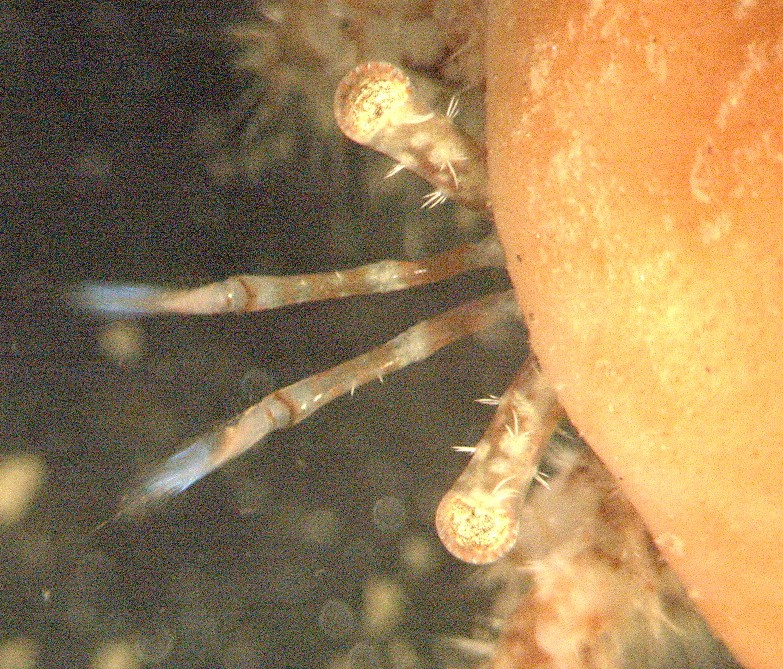
This individual has clumps of white, bristly setae onthe eyestalks
and on the antennae, though the individual above did not.
Photo by Dave Cowles, July 2008
Authors and Editors of Page:
Dave Cowles (2005): Created original page